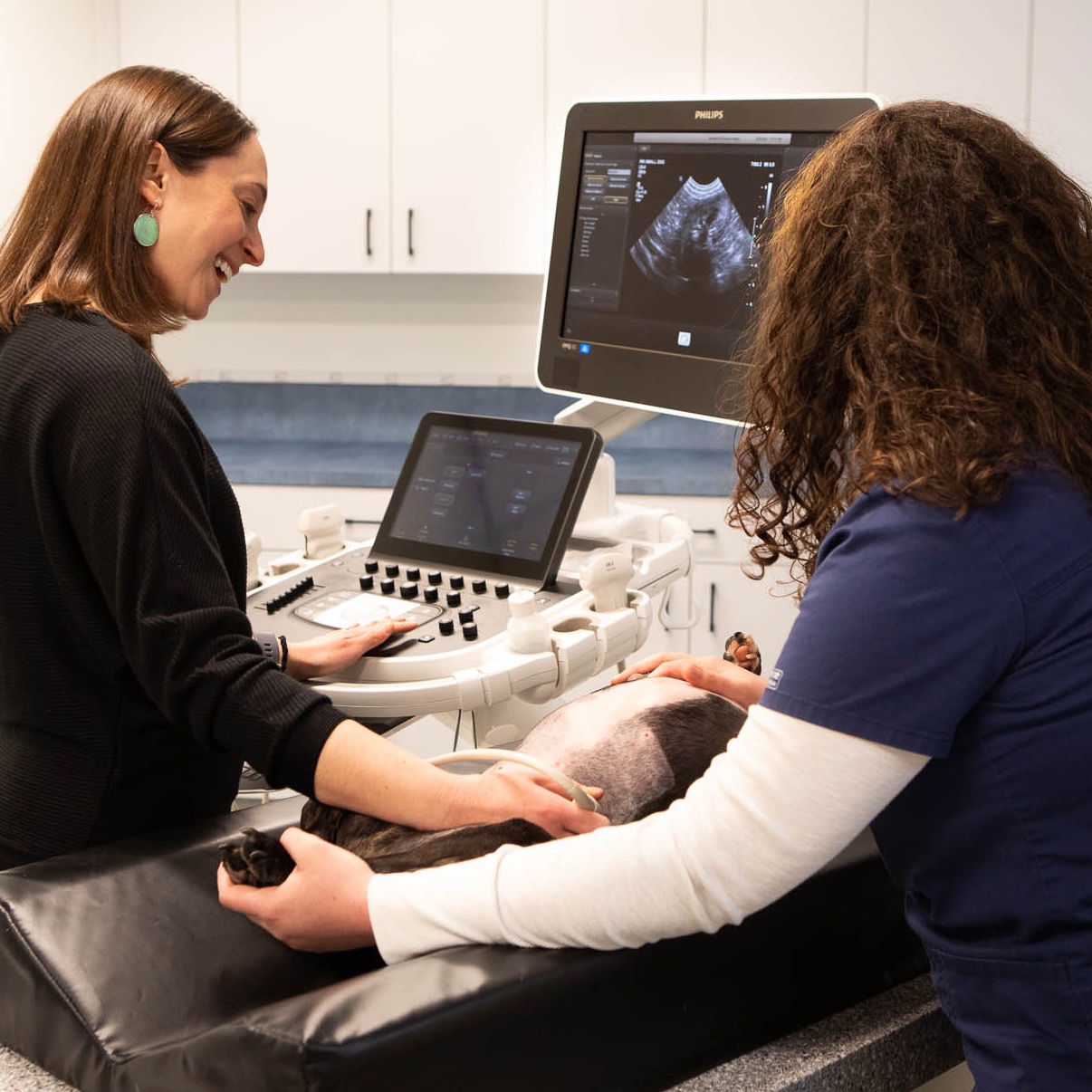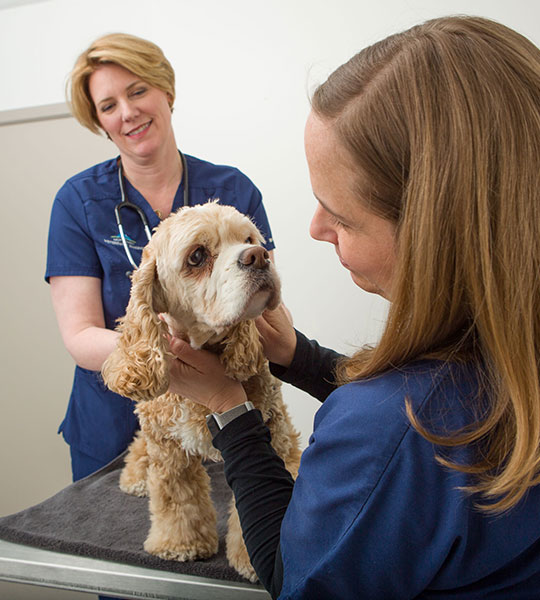The doctor will provide initial impressions with you that same day. Complete results will be provided to your veterinarian in the form of a written report within 24 hours. Your veterinarian will also be provided with access to the images for review.
We can take chest or abdominal radiographs in conjunction with another service like ultrasound. We do not offer outpatient radiographs as a stand-alone service.


